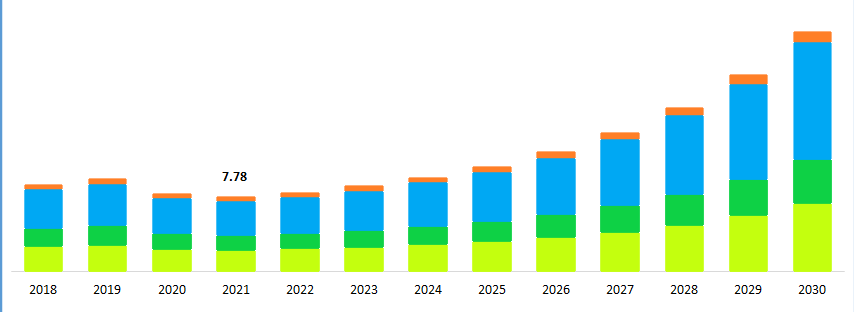Renowned Speakers

Cheng Zhu
University of Colorado Boulder, USA

Osman Adiguzel
Firat University, Turkey

Anil Ramdas Bari
Arts, Commerce & Science College Bodwad, India

Yoshinori Sato
Tohoku University, Japan

Pavle V Radovanovic
University of Waterloo, Canada

Nathalie Raveu
LAPLACE - Centre National de la Recherche Scientifique, France

Jiangtao Cheng
Associate Professor Virginia Polytechnic Institute and State University USA

Rainer Timm
Lund University, Sweden
Recommended Global Nanotechnology Webinars & Conferences
Europe & UK
Asia Pacific & Middle East
Canada
Nano Summit 2023
ABOUT CONFERENCE
The 40th Global Summit on Nano science and Technology invites nanotechnology researchers, nanoscience and nanotechnology investors, Nano scientists, practitioners, policy makers, industry experts and members of professional bodies to send their abstracts for the conference. Nano Summit 2023 will be held during June 26-27 in Tokyo, Japan.
You have a great opportunity at this conference to learn more about the most cutting-edge multidisciplinary techniques in nanoscience and nanotechnology. Additionally, by giving you precious networking opportunity to meet outstanding professionals in the area, the conference provides a perfect platform for you to make new contacts in the field of nanoscience and nanotechnology.
In order to share their most recent research findings with the world and inform other esteemed delegates of the most recent trends in the field of nanotechnology, this event has taken the initiative to bring together top experts from both industry and academia on a common platform at Nano Summit 2023 Conferences. We kindly invite all interested individuals from all nations to join us at our event and contribute to its success.
TARGET AUDIENCES
- Nanotechnology Professionals
- Directors of companies in the field of Nanotechnology
- Leading scientists
- Biomedical Engineering
- Medicine and Pharmaceuticals
- Professors
- Fellows or postdoctoral students
- Researchers, CEOs
- Business Delegates
- Doctors
- Young research scientists
- Nanotechnology Associations and Societies
- Manufacturing Medical Devices Companies
- Healthcare professionals
- Founders and Employees of the related companies
- Clinical investigators
OBJECTIVES
1. To comprehend the impact of the quantum and nanoscale on materials, as well as the context, history, and nature of nanoscience and nanotechnology.
2. To develop a theoretical grasp of various materials and how they are used in nanotechnology.
3. To become familiar with the procedures for producing and characterising graphene and graphene oxide.
4. To know the science underlying the peculiar features exhibited by graphene and its applicability.
INTRODUCTION
Materials that has at least one exterior dimension within 1–100 nm are known as Nanomaterials. Nanomaterials can be developed intentionally through engineering for a specific reason or they can emerge naturally as by-products of combustion reactions. Compared to their equivalents in bulk form, these materials may have distinct physical and chemical characteristics. Over the past few years, research and development activity in the broad and interdisciplinary field of nano science and technology has exploded globally. It has the potential to significantly alter the processes used to make materials and products, as well as the variety and type of functionalities that may be accessible. It already has a large commercial impact, and this significance will probably grow in the future.
SESSIONS/TRACKS
TRACK 1: NANOSCIENCE AND NANOTECHNOLOGY
The study of phenomena and the manipulation of materials at the atomic, molecular, and macromolecular scales, where properties are markedly different from those at a larger scale, is known as Nanoscience. By manipulating shape and size at the nanoscale, nanotechnologies enable the design, characterization, manufacture, and application of structures, devices, and systems are called Nanotechnology. The modelling of nanoscale objects, materials, and interactions is a crucial part of nanotechnology. Technology advancement depends on understanding the underlying science of nanoscale interactions. One of the primary areas of study in the field of nanotechnology is these interactions.
- Drug Delivery and Nano Particles
- Molecular Nanotechnology
- Bionanoscience
- Lipid Nanoparticles
- Nanofliuidics and Nanoionics
- Nanobiopharmaceutics
TRACK 2 : NANOTECHNOLOGY IN COVID 19 PANDEMIC
It is believed that nanotechnology and science can significantly contribute to the efficient regulation of COVID-19. In order to create materials with specific structures and molecular architectures, nanoscience and technology typically involve the design and development of materials with particle sizes ranging from one nanometer to hundreds of nanometers. These nanomaterials exhibit exceptional and distinctive optical, electrical, and biological properties as a result of their nanoscale structure. Because nanoparticles (NPs) and viruses have comparable activity scales, Nanotechnology can be used to build vaccines and manipulate the immune system. Researchers in the field of nanomedicine have been studying the association between the ability of different Nano Systems and viral vectors to deliver genes and high infectivity for quite some time.
1. Nanotechnology-based vaccines
2. Immunization by delivery of viral biomolecules
3. Nucleic acid-based Nano vaccines
TRACK 3: NANO TECHNOLOGY IN DIAGNOSIS OF COVID 19
Nanotechnology can be used as a tool in medical and environmental applications to obtain rapid diagnostics, early disease detection, and identification of infectious pathogens that can cause pandemics, particularly in the form of nanobiosensors that boost the effectiveness and calibre of the detection process. Researchers exploring biosensors are looking for ways to improve the surface area of biosensor structures to obtain higher sensitivity and shorter detection times compared to conventional approaches as a result of the development of novel nanomaterials and nano-fabrication technologies.
- Nanosensors for diagnosing
- Nanoparticles in COVID-19 Testing
- Bio-Nano Interface Technology
- Nanotherapies for COVID-19 Management
- Biomedical Nanotechnology
- Nanomaterials
TRACK 4 : NANOPHOTONICS AND NANOELECTRONICS
The science and engineering of light matter relations on wavelength and subwavelength scales where the interactions are governed by the physical, chemical, or structural properties of naturally occurring or created nanostructured matter is known to be Nanophotonics. The use of nanotechnology to electronic components is known as Nanoelectronics. In order to identify and take use of the special features of nanomaterials for electronics, photonics, and optoelectronics, the Nanoelectronics and Nanophotonics group combines experiment, theory, and analysis. Nanophotonic devices are needed to control the parameters of quantum emitters and improve their usefulness.
- Nanoelectronic Biomedical Devices
- Nanofabrication
- Molecular electronics
- Nanotube transistors
- Modern optics
- Mobile and fixed networks
- MEMS and NEMS Devices
- Micro/ Nanolithography and MOEMS
- Quantum dot photodetectors
- Surface micromachining
TRACK 5: NANOBIOTECHNOLOGY
A relatively new branch of study called nanobiotechnology explores the distinct physical, chemical, and biological characteristics of nanostructures and their uses in a variety of industries, including agriculture and medicine. It has been discovered that metal nanoparticles are the main chemicals affecting fungal diseases in both plants and people. The easiest way to sum up the role of nanobiotechnology (also known as nanobiology) in medicine is to say that it enables current medicine to advance from treating symptoms to developing treatments and restoring biological tissues.
APPLICATIONS OF NANOBIOTECHNOLOGY
1. Diagnostic Application
2. Therapeutic Application
TRACK 6 : NANOSAFETY
The various methods, instruments, and strategies pertaining to nanotechnology safety. In order to assure the proper development and application of nanomaterials in the factory of the future, it involves the policies, standards, and research necessary. Nanobiology enhances ideas by taking into account the nanoscale, nanodevices, and nanoparticle phenomena that occur in nanotech research.
- Impact of Nanobiotechnology
- Regulations of Nanobiotechnology
- Roller Nanoimprint
- Bionanoscience
- Ultrafast Nanoimprint
- Nanobiomolecular Engineering
TRACK 7: GREEN NANOTECHNOLOGY AND WATER TREATMENT
Green nanoparticle manufacturing is actively aided by natural substances including microorganisms, plants, and organic polymers like lipids, proteins, and carbohydrates. An alternative technique for purifying water bodies of contaminants is to use green nanoparticles. Green nanoparticles are a practical, convenient, and eco-friendly solution for wastewater treatment. Remediation and purification (by complete or partial elimination of contaminants), pollution monitoring (with pollutant-specific nanosensors and detectors), and pollution prevention are the three main applications of nanotechnology in water treatment.
- Nanotechnology in Water Treatment
- Water purification Technology
- Nanoremediation & water treatment
- Water filtration
- Nanosorbents water treatment
- Nanotech in disinfected water
TRACK 8 : NANO ENGINEERING
The engineering discipline known as Nano engineering is devoted to the investigation, creation, and improvement of materials at extremely small scales. It can be compared to how mechanical engineering employs the concepts of physics as the practical application of nanoscience. Nano engineering is primarily concerned with the interaction of nanoparticles to create usable materials, structures, devices, and systems. Nano engineering is more of an enabling technology with applications in the majority of industries, including electronics, energy, health, and biotechnology. It is not quite a new science. Quantum dots, carbon nanotubes, and Nano composites are just a few examples.
- Nano Robotics
- Nano Devices
- Nano Sensors
- Nano Structures
- 3D Printing
- DNA Nanotechnology
TRACK 9: NANOTECHNOLOGY: IN OTHER FIELDS
In hundreds of products, including sunscreen, cosmetics, clothing, and sporting goods, nanoparticles are already present. Nanotechnology is a hot topic in research and development circles all over the world. Nanotechnology is being used to create biosensors, drug delivery systems, and other medical applications.
- Household Nanotechnology
- Biomedical Sciences
- Agricultural research
- Food Industry
- Computer Sciences
- Environmental Sciences
TRACK 10 : NANOTECHNOLOGY APPLICATIONS
Nano technology applied in various sectors like;
1. ELECTRONICS- In order to create quantum nanowires that are lighter, more conductive, and stronger, as well as smaller, faster, and more efficient microchips and gadgets, carbon nanotubes are quickly displacing silicon as the preferred material. Due to its characteristics, graphene is a great choice for flexible touchscreen development.
2. ENERGY- Solar panels that convert twice as much sunshine into power are now conceivable thanks to a new semiconductor created by Kyoto University. Costs are decreased, stronger and lighter wind turbines are produced, fuel efficiency is increased, and energy savings are possible due to some nanocomponents' ability to insulate heat.
3. BIO MEDICINE- Some nanomaterials' characteristics make them perfect for enhancing early cancer or neurological disease diagnosis and treatment. They can target cancer cells specifically without endangering healthy cells. Additionally, certain nanoparticles have been employed to improve medicinal goods like sunscreen.
4. ENVIRONMENT- Some of its eco friendly applications include heavy metal nanofiltration systems, wastewater treatment with compressed nitrogen, and ion-based air purification. There are also Nano catalysts available to improve the effectiveness and reduce the pollution of chemical reactions.
5. FOOD- In this sector, nanocomposites and nanobiosensors could be utilised to increase food production by reducing oxygen transfer in packed goods, enhancing mechanical and thermal resistance, and detecting the presence of pathogens in food.
6. TEXTILE- Nanotechnology enables the creation of stronger, lighter, and more durable materials for sports equipment and motorcycle helmets as well as intelligent fabrics that are wrinkle- and stain-resistant.
TRACK 11: NANOTOXICOLOGY
The study of the toxicity of nanomaterials which can be broken down into those produced by manufacturing techniques such spray drying or grinding and those that occur naturally, is the focus of the discipline of toxicology known as Nano toxicology. Since it deals with the negative consequences of nanoparticles on the environment and its people, nanotoxicology is a crucial topic of study. For toxicological and scientific journals that publish findings from nanotoxicology investigations, improving the quality of data presentation in nanotoxicology studies, particularly in the area of test item characterization, is a major concern.
- Toxicological assessment of manufactured Nanoparticles
- Effects of Nanotoxicology in Nanomaterials
- Impacts of Nanoparticle design in Nanotoxicology
- Different types of Nanotoxicology
- Reduction in toxicity while maintaining therapeutic effects
TRACK 12 : CARBON NANOTECHNOLOGY
The goal of Carbon Nanotechnology is to deliver timely coverage of the most recent advancements in the subject with up-to-date analyses and observations from eminent authorities. As a key influencer of new nanotechnologies, carbon nanotechnology has developed into a fully interdisciplinary discipline that integrates elements of chemistry, physics, biology, medicine, materials science, and engineering. Carbon nanotubes are one of the strongest materials known to man, with unique structural and electrical attributes that make them suitable for a wide range of applications.
- Carbon nanotubes formation and characterization
- Properties of Nanotubes
- Polymer-carbon nanocomposites to sensors
- Purification and separation of carbon nanotubes and related aspects
- Nano Electron emitters
- Molecular electronics
TRACK 13 : NANOMETROLOGY
The science of measurement at the nanoscale is the branch of metrology known as Nanometrology. In order to manufacture nanomaterials and devices with a high level of accuracy and dependability, nanometrology is essential. Advances in nanometrology are closely related to the development of nanotechnology. Without nanometrology, nanotechnology would not have achieved the recognition of its merits. Numerous scientific fields, including biological, medicinal, and environmental science, have utilised nanometrology. The development of tools like optical tweezers, scanning probe techniques, and electron beam techniques has made this possible.
TRACK 14: ENVIRONMENTAL NANOTECHNOLOGY
Environmental nanotechnology is thought to be crucial to the development of efficient solutions for a wide range of environmental engineering and science problems. Applications of environmental nanotechnology focus on finding new solutions to the world's environmental issues. The quick development of nanotechnology has generated a lot of interest in the non-material uses for improving systems, increasing the effectiveness of monitoring equipment, producing renewable energy, and cleaning up environmental pollutants. Nanotechnology, on the other hand, is now playing a little part in environmental protection, whether in research or in real - time applications.
- Nano-Enabled Treatment Technologies
- Nano-Sensors for Biological/Chemical Contamination
- Nanomaterials for Water, Soil and Air Remediation
- Nanopollutants
- Environmental Monitoring with Nanotechnology
TRACK 15: PHARMACEUTICAL NANOTECHNOLOGY;
In the world of pharmaceuticals and medicine, nanotechnology is regarded as a recent and quickly developing sector. As drug delivery vehicles, nanoparticles provide a number of benefits in terms of increased efficacy and less negative medication reactions. In pharmaceutics, nanotechnology aids in the creation of more improved drug delivery methods, making it a valuable and potent tool as a replacement for traditional dosage forms. Pharmaceutical nanotechnology aids in the fight against a number of diseases by identifying disease-related antigens as well as the bacteria and viruses that cause them. It has proven to be helpful in overcoming the disadvantages of standard dosage forms like tablets.
APPLICATION OF PHARMACEUTICAL NANOTECHNOLOGY
1. Drug Delivery
2. Tissue Engineering
3. In Gene Therapy
4. Molecular Diagnosis
5. Stem Cell Therapy
6. In Cancer Treatment
7. Drug Discovery
TRACK 16: ENERGY AND ENVIRONMENT
In order to establish clean and renewable energy, energy and environment research focuses on the production, storage, and effective exploitation of energy and natural resources as well as the assessment of how the environment and energy technology interact. To comprehend and establish sustainability, research on how renewable energy technologies interact with the environment (natural resources) is crucial. This strategic study topic is related to two themes: Sustainable Environmental Systems and Efficient & Clean Energy Systems.
- Nonnuclear Materials
- Oil & Gas
- Nano-energy
- Nano Solar Cells
- Nanofuels
- Nano Batteries
- Nano fibers
- Novel Generation in Energy storage
TRACK 17: NANOCHARACTERIZATION
Nanoparticle characterization is a subfield of nanometrology concerned with identifying and measuring the physical and chemical properties of nanoparticles. Nanoparticles are often designed for their unique properties and have at least one exterior dimension of fewer than 100 nanometers. Nanocharacterization is used for a variety of purposes, including occupational exposure evaluations to determine health and safety issues, nanotoxicology research, and process control.
- Nano Tribology
- Nano Sensors and Actuators
- Nanoscale Particles Microscopy
- Quality of Nanosystem
- Regulatory aspects towards Approval of Nanomedicine and nanostructures
TRACK 18: LIFE SCIENCES AND NANO MEDICINE
In a variety of application areas, nanotechnology is a young technology that is expected to offer technological solutions and commercially viable products. Pharmaceuticals, biotechnology, medical devices, diagnostics, gene therapy, medication delivery, and tissue engineering are a few examples of life sciences fields where nanotechnology has applications. Nanotechnology offers numerous potential advantages for drug delivery methods. Vaccine adjuvants and delivery systems, nanostructured applications used in orthopaedics and wound management, controlled release drug delivery systems, delivery vehicles that enhance circulation and targets of drugs and to specific cells, and systems that increase the solubility of poorly water soluble drugs are some of the advantageous areas in which nanotechnology efforts are being made.
TRACK 19: NANO CHEMISTRY AND WET NANOTECHNOLOGY
Nanochemistry is a fast emerging branch of chemistry, particularly solid-state chemistry, that focuses on the development of useful materials with nanometer-scale dimension. It's a relatively young discipline of chemistry and materials science that focuses on finding new techniques to make nanoscale materials. Electronics and nanodevices and systems, composite materials, biotechnology and medicine, and even the textile industry have all been investigated using these materials.
Wet nanotechnology needs water because that is where the process takes place. Additionally, chemists and biologists are involved in the process as they attempt to combine separate molecules to create greater scales. Although Eric Drexler, proposed the idea of dry nano-assemblers, wet nanotech seems to be the most likely initial field where anything like a nano-assembler may be successful economically. Wet engineering as opposed to dry engineering, is what wet nanotechnology is. These two subfields of engineering have their own disciplines. From the perspective of nanotechnology, biologists work with wet engineering. The majority of the activities they investigate occur in aquatic environments since they are processes that occur in living things. Water makes up the majority of our bodies.
TRACK 20: NANOCOMPUTATIONAL MODELLING A subfield of nanotechnology known as computational nanotechnology focuses on the development and use of computer-based models for understanding, deciphering, and predicting the behaviour or characteristics of nanotechnology-related systems. Computational Nanotechnology offers expert insights into current and novel approaches, opportunities, and difficulties related to computational tools utilised in nanoscale research.
- Computational Modelling of Photonic Nanomaterials and devices
- Catalytic Cycles and Reactions
- Stochastic motion of Nanomotors
- Optimisation Nanostructures
- Molecular Modelling and simulation of Nanoscale systems
- Foundation of Nanoscale Physics and Modelling
MARKET ANALYSIS
The market for nanomaterials was assessed at USD 7.78 billion in 2021 and is anticipated to expand at a CAGR of 14.8% for the next 5 to 10 years. Government funding and support for nanomaterials to encourage potential growth, collaborations, and strategic alliances are important variables that favourably influence industry growth. Additionally, a decrease in the cost of nanomaterials will benefit marketing efforts in the anticipated years. The size of the worldwide nanotechnology market was estimated at $1.76 billion in 2020 and is anticipated to grow at a CAGR of 36.4% from 2021 to 2030 to reach $33.63 billion.

The study of nanoparticles and devices is a component of nanoscience and nanotechnology, which have applications in all branches of science including, but not limited to, chemical, biomedical, mechanical, and material research. The manufacture and deployment of physical, chemical, and biological systems and devices at scales ranging from individual atoms or molecules to about 100 nanometers is included in the field of nanotechnology. In several industry sectors, including communication, medical, transportation, agriculture, energy, materials & manufacturing, consumer goods, and households, nanotechnology is a game-changing and advantageous technology. One of the major drivers of the expansion of the nanotechnology market size is anticipated to be the emergence of new use cases and applications.
To Collaborate Scientific Professionals around the World
Conference Date June 26-27, 2023
For Sponsors & Exhibitors
Speaker Opportunity
Useful Links
Past Conference Report
Supported By
All accepted abstracts will be published in respective Conference Series International Journals.
Abstracts will be provided with Digital Object Identifier by
